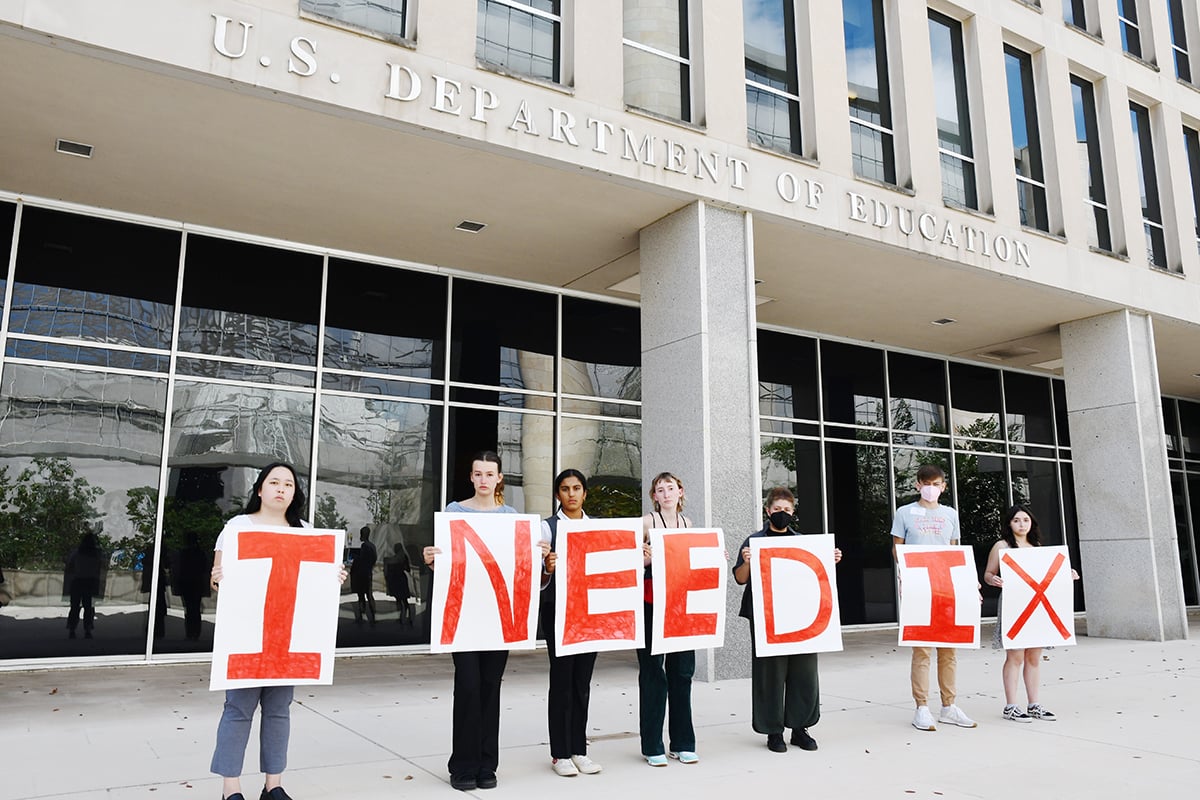Education Policy Brief #209 | Katie Lever | October 10, 2025
Summary
Leading up to the 2024 election, Donald Trump promised to dismantle the Department of Education, a sentiment that was supported in an executive order from the White House following Trump’s inauguration and also outlined in Project 2025. In a press release for the DOE published in March, U.S. Secretary of Education, Linda McMahon, reiterated this plan, stating that her “vision is aligned with the President’s: to send education back to the states and empower all parents to choose an excellent education for their children.” In recent weeks, McMahon reaffirmed that the Trump administration is committed to fulfilling this promise by 2029.
One of the fundamental jobs of the DOE is to allocate funds to educational institutions that receive federal funding. However, because laws pertaining to education cross state lines, this paints an uncertain picture for the future of education in the United States. This reality directly intersects with one of the most groundbreaking and far-reaching policy pieces in American history: Title IX.
Signed into law by Richard Nixon in 1972 as a follow-up to the Civil Rights Act of 1964, Title IX states that “No person in the United States shall, on the basis of sex, be excluded from participation in, be denied the benefits of, or be subjected to discrimination under any education program or activity receiving Federal financial assistance[.]” Title IX is a federal civil rights law that prohibits sex-based discrimination at educational institutions and programs receiving federal funding, including primary and secondary schools, colleges and universities, and extracurricular programs housed within these institutions (like sports teams). While Title IX does not directly address sexual harassment or assault, it helps female students navigate the legal process surrounding these acts by framing them as acts of sex-based discrimination and offering victims legal recourse when they are violated by their peers or superiors hired by their educational institution. Additionally, some teachers and staff are mandatory reporters, meaning that, under Title IX, they must report allegations of sexual harassment or abuse when disclosed by students. And because Title IX prohibits discrimination on the basis of sex, it works in favor of men, too. For example, in 2021, members of the Clemson University men’s track team filed a Title IX complaint when their program was set to be eliminated the following season, arguing that not only did the university not provide enough support for female athletes, but that eliminating the men’s team would lead to proportionately fewer opportunities for men, which is also a Title IX violation. After submitting the complaint and gaining legal support, the men’s program was reinstated and Clemson promised that the university would complete a full gender equity review in coming years.
Title IX is enforced through several channels, including legal retaliation, criminal charges, and withdrawal of federal funding–if an educational institution that receives federal funding is found to be in violation of Title IX, the ultimate penalty is that its funding can be revoked. Additionally, many institutions that receive federal funding set up Title IX departments and enforcement officers and create reporting and investigation procedures to ensure that they are not in violation of the law. But with the current administration’s plan to dismantle the DOE with no clear strategy for replacing it, the future of Title IX is uncertain to say the least. Although a post-DOE world would not necessarily do away with Title IX or nullify it entirely, the potential landscape could severely limit the law’s reach.
Analysis
Title IX is by no means perfect. The three-prong test designed to measure its enforcement sets the gender equity bar low, and it is the responsibility of the victim of sex-based discrimination to report it, which makes for a difficult road to justice for impacted parties. Additionally, unlike in Title VII, the term “sex” in Title IX legally does not extend to gender identity or sexual orientation, and though some administrations have interpreted it that way, others conceptualize “sex” in Title IX as simply referring to sex assigned at birth. But Title IX nonetheless was a foundational piece of legislation that provided women access to education and sports like never before. From 1972 to 2012, women’s athletic participation increased sixfold, and female representation in the classroom, too, skyrocketed, as the number of women attaining at least a college degree tripled from 1968 to 2011. By setting up a precarious future for the law, the Trump administration puts over 50 years of such progress at risk.
Regardless of the future, history shows that the fastest and easiest way to hamstring women’s advancement in society is to deny them access to education and sports. This has already partially been achieved with the striking down of Roe vs. Wade in 2023. Forced pregnancies and births halt the future aspirations of many women, especially in a country that does not also offer them benefits like universal healthcare, government-funded childcare, and paid maternity leave. The post-Roe landscape has already led to over 64,000 births resulting from rape in red states and mothers living in states with abortion bans face double the risk of dying during pregnancy and childbirth than those residing in abortion-friendly states.
Dismantling the DOE could be a logical next step in the continued subjugation of women by de-fanging Title IX via the dismantling of the DOE. Much like abortion laws, leaving education up to the states could be disastrous for women.

